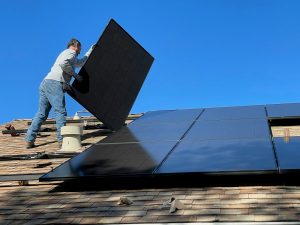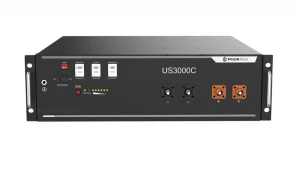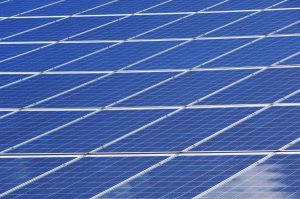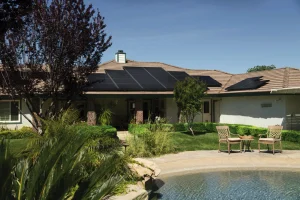Green technology, specifically solar and wind power, is often touted as the solution to our environmental problems. The idea is that by harnessing the power of the sun and wind, we can reduce our dependence on fossil fuels and decrease our carbon footprint.
However, is this truly the case? In this article, we will take a closer look at the environmental impact of solar panels, and whether or not they are truly good for the environment.
From the process of production, to the efficiency of solar panels in non-sunny places, we will examine the pros and cons of solar power and compare it to the advantages of wind power. So, are solar panels actually good for the environment? Let’s find out.
The Negative Impact of Solar Panel Production
Solar panels may seem like a clean and environmentally friendly alternative to fossil fuels, but the process of producing them is not without its own environmental impact.
Solar panels are made using silicon, a common element found in quartz. The process of making solar panels starts with mining silicon from the earth, typically from places such as Brazil, the United States, and China.
The silicon is then refined into solar-grade silicon, which is done in several places around the world. The refining process typically involves a blast furnace and if done in places like China, it’s done with coal which makes the carbon footprint of the process high.
After refining, the silicon is then used to make photovoltaic cells, which are the building blocks of solar panels. The cells are assembled into panels and most of the assembly is done in China. The materials used in the production of solar panels are silicon, aluminum, and glass which are all widely available.
The energy required to make solar panels can come from a variety of sources, some of which are highly CO2 intensive, such as coal. Additionally, some solar panels are produced using toxic materials or through non-environmentally friendly mining practices.
However, it is possible to produce solar panels using clean energy and without damaging mining processes. The key is to ensure that the panels you are using are produced in an environmentally responsible way.
This means looking at where your panels were made and what methods were used in their production. By making informed choices about the solar panels we use, we can ensure that we are reducing our carbon footprint and supporting environmentally friendly practices.
The Inefficiency of Solar Panels in Non-Sunny Places
Solar panels are a popular green technology, but their efficiency in generating electricity varies depending on location. In some locations very far from the equator, such as Alaska, the energy payback time for solar panels can be quite long. However, in most parts of the world, energy payback estimates for rooftop PV systems are between 1 and 4 years.
This means that within 4 years, the energy generated by the solar panels will have made up for the energy used in their production. With energy paybacks of 1 to 4 years and an assumed life expectancy of 30 years, most of the energy that PV systems generate will be free of pollution, greenhouse gases, and depletion of resources.
Based on models and real data, the idea that PV cannot pay back its energy investment is a myth. Studies have shown that PV-systems fabrication and fossil-fuel energy production have similar energy payback periods.
In Some Places, Wind Power is More Environmentaly Friendly
While solar power is often seen as the ultimate green technology, in some places, wind power may be a more environmentally friendly option. Wind power is often seen as less glamorous than solar. This means that wind turbines are only placed in areas where they will be effective, unlike solar panels which are sometimes placed in inappropriate places regardless of their efficiency.
Another benefit of wind power is the materials used in its production. Wind turbines are typically made from carbon fiber and aluminum, which have a lower carbon footprint compared to the silicon, glass and aluminum used in solar panel production. This means that the environmental impact of producing wind turbines is lower than that of producing solar panels.
Conclusion
It is important to note that while solar panels may seem like a clean and environmentally friendly alternative to fossil fuels, the reality is more complex. The process of producing solar panels can have a significant environmental impact, and the efficiency of solar panels varies depending on location. In some places, wind power may be a more efficient and environmentally friendly option.
However, it should be noted that in the UK, solar panels are generally environmentally friendly, and are also a very good investment financially.
The key is to make informed decisions about the type of renewable energy technology to use and to consider the local climate, resources and conditions before making a decision. By being mindful of the environmental impact of our energy choices, we can work towards a more sustainable future.






